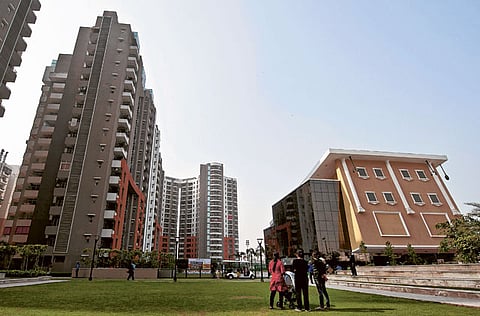Why government-led reforms are finally working for India's real estate
Stamp duty waivers will become more common, and spells gains for NRI buyers

Real estate has a multiplier effect on the Indian economy, with several allied industries reflecting changes in this sector. The government has been proactive in recognizing this and announced initiatives to encourage investments.
A slew of measures were announced that are primarily aimed at encouraging buyers to hasten their purchase decisions and invest now. The focal idea on which these initiatives are based is that unsold inventories should be liquidated at the earliest, bringing much needed cashflow into the sector.
Developers were paying interest on cost of capital needed for construction, but with diminished sales, they were unable to balance the cashflows. For an investor, this cycle results in rigidity in terms of price and payment schedules offered by the developer.
One of the first initiatives by the government was the formation of a "Special Window for Affordable and Mid Income Housing' (SWAMIH) fund to aid those projects stuck in the last-mile of their construction activities. As this fund evaluated projects and then started disbursing monies, the market sentiment saw a gradual uptick as stuck projects were now back on track.
Developers can't divert
The fund brings added transparency to the sector by its strict control mechanisms to mitigate risk of fund diversion. It also points to the accountability on the developer, regulatory bodies and the government’s part that project delivery is sacrosanct. In no way can a developer launch a project, take monies from retail investors and then not build as has happened with multiple investors in the past.
The biggest initiative with the maximum impact on sales was the reduction of stamp duty in Maharashtra and Karnataka. While Maharashtra kept this applicable for all projects, Karnataka’s reduction applied only for properties under 2 million rupees.
Clear choices
Karnataka clearly wanted to boost the sales in the affordable category, while Maharashtra wanted buyers across price segments to avail the benefits of this scheme.
Investors across India and GCC rushed to take advantage of this time-bound offer. In such a scheme, the value of benefit is directly proportional to the size of the investment. Hence, luxury property sales saw a significant jump in the third quarter of the current financial year.
This scheme allowed investors to save up to 6 million rupees on property worth 20 million rupees. Seeing the success of this move, other states have been requested to drop their stamp duty charges. It is expected that several will follow suit in the coming days.
The recent move where the differential between 'circle rate' and agreement value is being increased from 10 per cent to 20 also promises significant benefits for investors. They will get additional price flexibility from developers. Direct price reduction as well as savings on the tax paid on such transactions will add to the overall value brought by this scheme.
Check infrastructure
The government has also earmarked funds for improving infrastructure and capacity to accommodate the growing urban population. As these funds get deployed, the infrastructure will gradually improve and, over the next few quarters, provide massive capital gains for early investors.
NRIs have always shown the appetite for shrewd commitments, where they have invested in upcoming localities and were able to able to earn handsome returns when they wanted to liquidate the asset.
The recovery from the setbacks caused by COVID-19 has been rather stellar for Indian real estate. There has been a surge in investments, both from domestic and NRI buyers, causing all prominent micro-markets to register strong sales figures from this quarter.
Sales have been encouraging across different markets and budget segments. The major push has been given by the government through these regulatory changes. Developers have also brought their own schemes and benefits to supplement these regulatory changes.
For an NRI, the challenge lies in identifying a good property form the multitude of choices they are presented with. As digital adoption increases significantly, most of these concerns are being addressed. An investor sitting anywhere can have an actual look and feel of the property through video calls and virtual tours.
It's becoming transparent
The regulatory body data is available on public servers and are easy to be accessed by anyone who wishes to check the credibility of developer or the project. Several ready properties have come into the market, which further mitigates construction risks in the mind of an NRI investor.
For an investor, the combined effect of various factors has made this the best time to dive into Indian real estate. Property prices have withstood the storm of COVID-19. It would be ideal to identify and finalize the real estate investments of your dreams now... as like all good things, these offers and schemes will also come to an end.

- Shajai Jacob is CEO – GCC at Anarock Property Consultants.
Sign up for the Daily Briefing
Get the latest news and updates straight to your inbox







